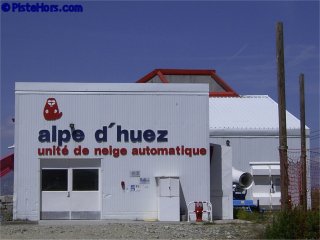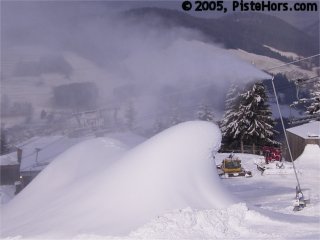
Articles > Diamonds Are For Never > Opposition To The Espace Diamant
Not everyone is so enamored of the plan. A powerful group of environmentalists and mountain enthusiasts are ranged against the ski resorts and developers. After Grand Valira in the Pyrénées and the Paradiski ski area, l'Espace Diamant is seen as the next big fight. The opponents, who count in their number: the Federation of French Alpine Clubs, The Rhône-Alpes Environmental Protection Federation, Pro Mont-Blanc and Mountain Wilderness want to preserve the Mont-Blanc area. Gilles Privat, general secretary of Mountain Wilderness thinks the economic arguments are short-sighted and invokes the Swiss example of Saint-Moritz and Davos, which he claims, have the possibility of linking their ski areas but dont because skiing is just one part of winter tourism. In fact Davos and St Moritz are geographically quite far apart (the author was a resident of Davos). Davos is a good example on its own. This ski area is actually split into five separate domains. Davos used to have a link to the Heuberg ski area located in a vast high altitude north facing bowl but the links were removed in the 1980s. The Arosa valley ski areas within easy reach from the back of the Parsenn ski area.

Snow Factory at l'alpe d'Huez
Why is the Swiss example so different? The reasons are historic. France has a highly centralized administration with close links to industry. Many of the top players come from the elite Ecole Nationale dAdministration and the Grandes Ecoles. French skiing developed under an almost Sovietesque Plan Neige. Landowners, largely peasant farmers scraping a living from the hills had their land compulsory purchased at the prevailing agricultural prices. The reason given was to stop speculation but many saw expropriations as grossly unfair. There was a peasants revolt at Flaine and a second was only stopped at la Plagne by gerrymandering the local constituencies. Administrators had the power to push through new resorts, often with little recourse to planning constraints or even good sense as the avalanches at Val dIsère (1970), le Tour (1988) and Montroc (1999) have shown. The economic argument is a powerful one but it was largely property speculators and politicians who benefited from the change with much of the investment coming from the public purse. Except in the rare case of Flaine, roads were built or improved with state funds. Expensive and barely profitable ski lifts were constructed and run by the local communities and cheap loans obtained thanks to the municipalities AAA credit ratings.

Snow Canon in operation
Contrast this with Switzerland with its spirit of strong local and regional government. PisteHors.com asked the director of the Davos ski lift company why they didnt interlink the resort and extend to Arosa. He told us they would like to but the land is leased from private landowners who wont even let them terrace the slopes. There is also a very strong environmental lobby against building new and large ski lifts. Another big difference between France and Switzerland is that in Switzerland resorts are often linked at the bottom of valleys through bus or rail links. In France linking via summits has been favoured.
The journalist François Carrel in an article called Ravages tout schuss (Full-speed destruction) which appeared in Libération has said that we shouldnt be fooled by the pristine whiteness of the mountains in winter. Winter tourism is just another heavy industry, but it is a heavy industry located in a sensitive high-altitude area which is irreversibly changing the environment. The infilling of ski domains, while logical to economists and businessmen, is particularly damaging to flora and fauna. With the need to maximize the return on investment pistes are kept open as much as possible and this means that avalanche protection work and piste bashing often takes place at night and under floodlights. During the winter a ski resort operates 24/7. This leaves little room for animals to move around undisturbed. Most of the current snow making installations require low temperatures to operate. That also means running them at night. Apart from the visual impact, energy and water consumption a snow canon emits between 60 to 80 decibels, the equivalent of heavy traffic. This noise also disturbs wild animals.
<< The Espace Diamant | Diamonds Are For Never | Espace Diamant Property Speculators >>